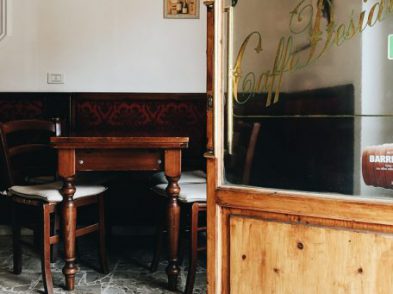One of the better known expatriates who made Florence his home, at least in the circle of art historians and American residents, was Bernard Berenson (1865-1959), the eminent art connoisseur and collector, author of Florentine Painters of the Renaissance (1896). But like many celebrated people, there are two versions of the character and the story: one is the celebrity version, the other is the tarnished, notorious version What Berenson is celebrated for is his central role in changing the tastes of the time and making the earlier Italian schools of painting fashionable in the US. He was also responsible for bringing a range of Italian paintings to American museums, for example the Isabella Stewart Gardner Museum in Boston. Berenson was the advisor to wealthy clients on the value of artworks, particularly Italian works, and was actually Isabella Stewart Gardner’s advisor for about thirty years.
In 1900, he took up residence at Villa I Tatti in Settignano (now the Harvard Centre for Italian Renaissance Studies), initially renting it from John Temple Leader and then purchasing it. He lived there until his death in 1959. It became a sort of mecca for European and American intellectuals and artsy types, who often went to visit, such as D.H. Lawrence who used Berenson as a character in one of his novels. Although many people revere him now, he did not always get along with everyone and had an infamous temperament. Harold Acton said of Berenson, “he resembled an Old Master, whether a Titian or an El Greco depended upon his mood.” There was the famous quarrel between the brilliant writer and fellow expatriate Vernon Lee that lasted over twenty years. She had publicly criticised his Florentine Painters of the Renaissance in an 1896 review, calling him “an ill-tempered and egotistic ass.” He, on the other hand, had charged her with plagiarism.
As the advisor for many wealthy people and qualified authenticator of important artworks, Berenson, known as the pioneer scholar of the Italian Renaissance, held quite a bit of power in this department. He used to authenticate paintings for the millionaire gallery owner and art dealer, Sir Joseph Duveen, who had exclusive galleries all over the world. Duveen himself has been described “as predatory as any of the big carnivores of the jungle,” so obviously he was not the most ethical character himself. Berenson secretly received a nice percentage of the profits on the paintings he authenticated for Duveen, meaning that a painting such as the Giorgione Portrait of a Man that he described as having “ deplorably bad preservation” in 1895, became a “miraculously fine state” when sold in 1913. Similarly, Duveen sold a Madonna and Child painting after Berenson newly attributed it as a Bellini in 1927 for ten times what it had been worth when he attributed it as “workshop of Bellini”, which is how the painting is now labelled.
The Florentines eventually made Berenson an honorary citizen in 1949 however, largely because of his significant involvement in rebuilding the bombed Ponte Santa Trinità after World War Two. The 16th century bridge was the greatest loss to Florence during the war, when it had been mined by the Germans in 1944 along with all the other bridges aside from the Ponte Vecchio. Apparently it was Berenson who suggested that the bridge be reconstructed “as it was where it was”. Can you imagine Florence without the Santa Trinità bridge? No, it was simply unthinkable. Berenson was the honorary president of the committee set up to reconstruct the bridge and he helped secure a large donation and contributions to help pay for the reconstruction. Even the eccentric art collector Peggy Guggenheim helped him out by donating Jackson Pollock’s Something of the Past painting to auction to raise money for the bridge. The committee managed to make sure that the entire bridge was reconstructed from original materials from the original Boboli Garden quarries, (not concrete, the cheaper version that the Italian State wanted to use) even using traditional 16th century tools. When the bridge was finally completed in 1958, it was considered a perfect replica of the original.
To find out how to arrange a special visit to Villa I Tatti, for scholars or anyone with a particular interest in the Renaissance, and take a tour of the collection that Berenson left behind to Harvard at his death, visit the website of Harvard’s Centre for Italian Renaissance Studies www.itatti.it.








